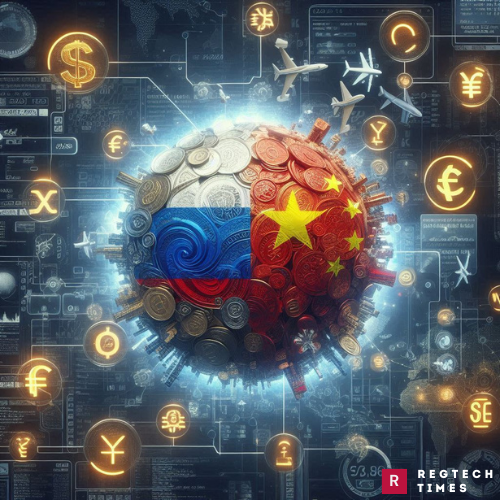Russia has been using the Chinese yuan more and more in recent years, mainly because of the fallout with Western countries over the invasion of Ukraine. However, this rapid adoption of the yuan has now hit a roadblock. The United States has been putting pressure on countries that do business with Russia, using the threat of secondary sanctions to curb the use of the yuan in Russia. This has made it harder for Russia to continue its heavy use of the Chinese currency, affecting trade and payments between the two nations.
Understanding Secondary Sanctions
Secondary sanctions are penalties that the US can impose on foreign companies and countries that continue to do business with sanctioned entities, like Russia. These sanctions are not just limited to US companies but can affect businesses worldwide. The fear of these penalties has made many Chinese banks hesitant to deal with Russia, leading to a shortage of yuan in the country.
Impact of Sanctions on Financial Markets
The situation became more severe after the US Treasury Secretary made a statement in December 2023. The Secretary warned that the US would take strong action against any financial institutions helping Russia’s war efforts. This announcement caused a big difference in the overnight borrowing rates for yuan between Russia and China. To manage this, the Bank of Russia had to increase its yuan liquidity offer through swap operations. The sudden high demand, due to the stopping of dollar and euro swaps, caused interest rates to soar to 31%. The Bank of Russia’s intervention brought these rates down to 5%-7%, though they were previously in the 0%-5% range before sanctions were applied.The Escalating Pressure: Secondary Sanctions on China in Response to Russia’s War Economy
Russia’s Shift Towards China
In recent years, Russia has significantly shifted its economic focus toward China. Trade between the two countries grew by more than 60% to $240 billion in 2023. This growth allowed Russia to surpass Germany, Australia, and Vietnam in terms of trade volume with China. China benefits from buying Russian oil and other goods at discounted prices, while Russia gains access to a wide range of Chinese consumer and high-tech products.Today, China is Russia’s main trading partner. The yuan now makes up about 40% of Russia’s export and import payments and over half of the turnover in Russia’s foreign currency market. This shift is impressive, especially considering that Russia’s use of the yuan was almost zero at the start of 2022, before the invasion of Ukraine.Japan Sanctions Indian Company Si2 Microsystems for Assisting Russia
Challenges and Slowdown in Growth
Despite this rapid increase in the use of the Chinese yuan, challenges remain. Trade growth between China and Russia slowed to just 3% in the first five months of 2024, a significant drop from the nearly 42.5% growth rate the previous year. According to the Bank of Russia, the proportion of Russia’s trade conducted in “friendly currencies” has stayed the same as last year.The peak of Russia’s yuan adoption might have been reached in 2023. There are two main reasons for this. Firstly, many large Chinese banks are hesitant to engage with Russian counterparties due to the threat of secondary sanctions. Secondly, Russia’s use of the yuan heavily depends on its oil exports, and other countries are cautious about accepting the yuan for their imports. If oil prices do not increase in the coming quarters, Russia’s yuan trade is likely to stagnate.Digital Yuan Money Laundering: Chinese Criminal Gang Sentenced
Banking Restrictions and Solutions
Some of China’s largest banks stopped accepting yuan from Russia, causing import disruptions for several months. Russian companies had to rely on smaller regional banks after a meeting between the leaders of Russia and China in May. However, concerns remain about the future. The Chinese yuan’s usage in Russia has reached a point where its further growth depends on the overall trade volume with China. Additionally, the yuan’s adoption for settlements with other countries will play a crucial role.
The Chinese Yuan’s Role in Russia’s Financial System
The yuan has become a significant part of Russia’s economy. For example, when a large Russian company sold its business, US shareholders were paid in Chinese yuan instead of dollars or euros. This change shows the difficulty of transferring Western currencies out of Russia. Russian companies now use the Chinese yuan alongside the ruble for converting dollar and euro loans and issuing new bonds. The Bank of Russia also uses the Chinese yuan for operations with the National Wellbeing Fund.While there is some potential to increase the use of the yuan in Russia, it is minimal compared to the substantial shift that has already occurred. In June, new US restrictions halted exchange trading for the dollar, making the Chinese yuan the primary liquid currency available for trades and purchases in brokerage accounts, accounting for 99.6% of the total.


